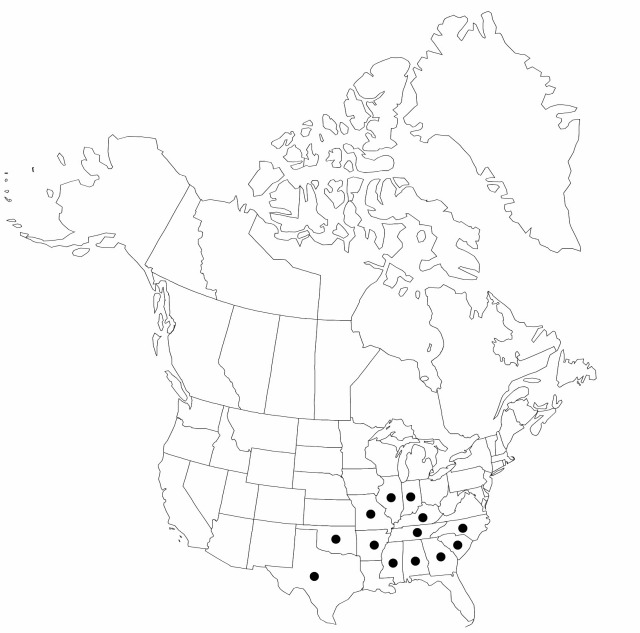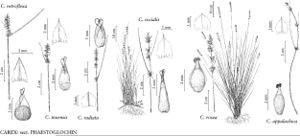Difference between revisions of "Carex socialis"
Brittonia 21: 77, fig. 1. 1969.
imported>Volume Importer |
imported>Volume Importer |
||
| Line 55: | Line 55: | ||
|publication year=1969 | |publication year=1969 | ||
|special status=Illustrated;Endemic | |special status=Illustrated;Endemic | ||
| − | |source xml=https:// | + | |source xml=https://bitbucket.org/aafc-mbb/fna-data-curation/src/2e0870ddd59836b60bcf96646a41e87ea5a5943a/coarse_grained_fna_xml/V23/V23_490.xml |
|genus=Carex | |genus=Carex | ||
|section=Carex sect. Phaestoglochin | |section=Carex sect. Phaestoglochin | ||
Latest revision as of 20:41, 5 November 2020
Plants with short-creeping rhizomes to 6 cm. Culms 20–70 cm, 1.2–1.8 mm wide basally, 0.4–0.7 mm wide distally. Leaves: sheaths tight, green, fronts hyaline; ligules less than 2 mm, wider than long; widest leaf blades 1.5–2.2 mm wide. Inflorescences with 3–5 spikes, 2.5–5 cm × 4–6 mm; proximal internodes more than 2 times as long as proximal spikes; proximal bracts to 5 cm; spikes with 4–9 ascending to spreading perigynia. Pistillate scales hyaline with green midvein, ovate, 1.5–2.3 × 1–1.5 mm, body 1/2–3/4 length of perigynium, apex acute to awned. Anthers 1 mm. Perigynia green, usually 7–11-veined abaxially, 3.2–4.2 × 0.7–1.3 mm, base of body spongy, thickened, longitudinally striate adaxially, spongy region 1–1.5 mm, margins serrulate distally; beak 0.7–1 mm, apical teeth 0.2–0.4 mm. Stigmas straight or slightly twisted or coiled, 0.03–0.06 mm wide. Achenes elliptic, 1.8–2.3 × 0.8–1 mm. 2n = 58.
Phenology: Fruiting mid–late spring.
Habitat: Lowland deciduous forests, usually on clay soils
Elevation: 50–500 m
Distribution

Ala., Ark., Ga., Ill., Ind., Ky., Miss., Mo., N.C., Okla., S.C., Tenn., Tex.
